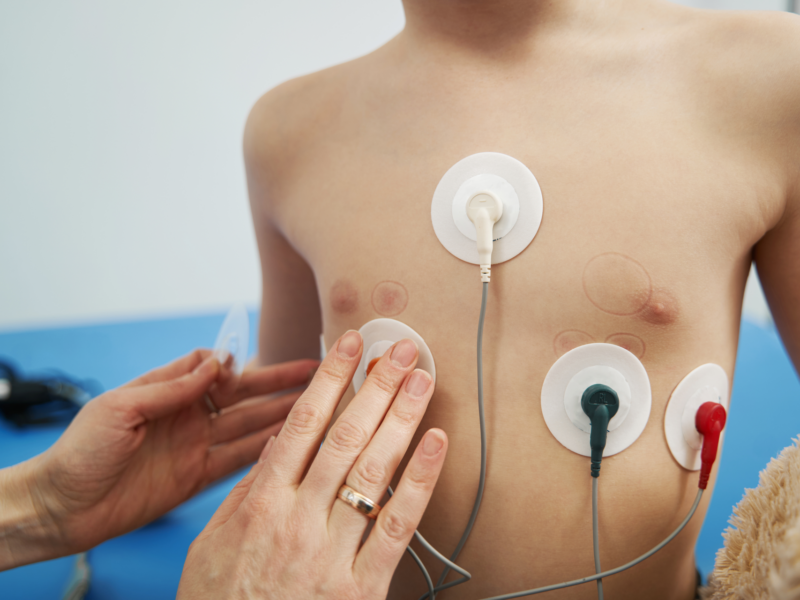(Some Other) Mother’s Milk
(Some Other) Mother’s Milk https://pediatricsnationwide.org/wp-content/themes/corpus/images/empty/thumbnail.jpg 150 150 Katie Brind'Amour, PhD, MS, CHES Katie Brind'Amour, PhD, MS, CHES https://pediatricsnationwide.org/wp-content/uploads/2021/03/Katie-B-portrait.gif- April 27, 2014
- Katie Brind'Amour, PhD, MS, CHES
As the daughter of a Wisconsin dairy farmer, Sarah Keim, PhD, has a keen grasp on the importance of testing milk for safe consumption.
“Government and industry have researched cow’s milk processing, health concerns and benefits for over 100 years,” says Dr. Keim, a researcher in the Center for Biobehavioral Health at Nationwide Children’s Hospital. “But our understanding of human milk is way behind.”
In an effort to fill that knowledge gap, Dr. Keim has launched a series of studies on breast milk and the growing business of milk sharing over the Internet. Thousands of mothers, convinced that human milk is essential for their infants, have turned to milk sharing — purchasing untested milk from online sellers, sometimes at a cost of more than $3 per ounce. Not only is the practice expensive, Dr. Keim’s latest research suggests that it may also be unsafe.
In a study published in the journal Pediatrics, Dr. Keim found that 74 percent of milk samples purchased online were contaminated either with disease-causing bacteria or high levels of bacteria in general, and 21 percent tested positive for cytomegalovirus DNA.
“Most milk-sharing websites try to educate about milk safety, but it doesn’t seem to be working,” says Dr. Keim, principal investigator in the Center for Biobehavioral Health in The Research Institute at Nationwide Children’s.
Many mothers who buy milk online from strangers receive products that arrive at temperatures ideal for bacterial growth. Nearly one in five samples in Dr. Keim’s recent study was shipped with no cooling agent at all, and coliforms were detected in nearly half of the samples. What’s more, because there’s no way to confirm the source of milk bought online, it’s possible the product isn’t even human breast milk.
Milk sharing isn’t new — many societies have a long history of wet nurses, both for necessity and convenience. But this Internet phenomenon may be driven less by historical norms than by the grassroots trend toward all-natural diets and the success of a public health messaging campaign proclaiming that “Breast is best.”
“There is a lot of societal and peer pressure to breastfeed,” Dr. Keim says. “So some women are willing to go to great lengths to provide breast milk to their babies, even if it’s not their own.”
Dr. Keim’s latest research suggests that as many as 25 percent of women consider either providing or receiving shared breast milk postpartum, via family and friends, the Internet or a milk bank. Seventeen human milk banks exist in the United States and Canada, but they give priority to infants in neonatal intensive care units. Additional milk banks would help, but Dr. Keim believes the supply would still fall short of the public demand for breast milk.
So what’s a mother who wants to give her newborn breast milk to do? One solution, she posits, is to change the messaging. Referral to lactation support before problems arise might spare many mothers the regret of failed breastfeeding and reduce the market for Internet milk-dealing sites, she says. Meanwhile, Dr. Keim adds, physicians should explain the potential dangers of milk sharing to their patients who are struggling to breastfeed their babies.
About the author
Katherine (Katie) Brind’Amour is a freelance medical and health science writer based in Pennsylvania. She has written about nearly every therapeutic area for patients, doctors and the general public. Dr. Brind’Amour specializes in health literacy and patient education. She completed her BS and MS degrees in Biology at Arizona State University and her PhD in Health Services Management and Policy at The Ohio State University. She is a Certified Health Education Specialist and is interested in health promotion via health programs and the communication of medical information.
-
Katie Brind'Amour, PhD, MS, CHEShttps://pediatricsnationwide.org/author/katie-brindamour-phd-ms-ches/April 27, 2014
-
Katie Brind'Amour, PhD, MS, CHEShttps://pediatricsnationwide.org/author/katie-brindamour-phd-ms-ches/April 27, 2014
-
Katie Brind'Amour, PhD, MS, CHEShttps://pediatricsnationwide.org/author/katie-brindamour-phd-ms-ches/April 28, 2014
-
Katie Brind'Amour, PhD, MS, CHEShttps://pediatricsnationwide.org/author/katie-brindamour-phd-ms-ches/April 28, 2014
- Post Tags:
- Center for Biobehavioral Health
- Posted In:
- In Brief







